FUTURE PROOFING YOUR TACKLE
By Grant Dixon
The more time you spend on the water, the wider becomes your ‘bag of tricks’ and hacks to improve your fishing lot.
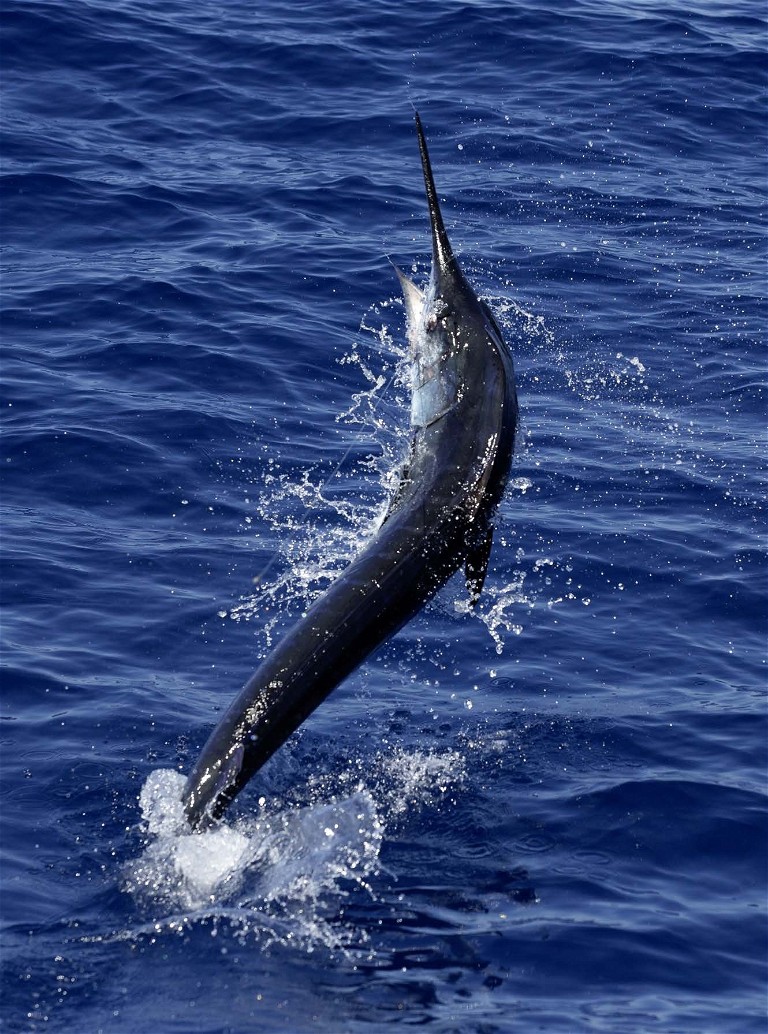
A couple I encountered recently came originally from Tony Orton and both are aimed towards keeping your gear in top-notch shape.
How many of you have separated your game reels from the rods and gone, “Oh-ooh, that doesn’t look good,” as your eyes fix on the corrosion or the worstcase scenario, the reel clamp is fixed to the rod thanks to salt and corrosion buildup?
I recently treated myself to a new set of Shimano Talica 50 and 25’s matched to Shimano Abyss bent butt 24-37kg rods with the intention they will be the last set of game gear I will need.
To prevent the aforementioned scenario Tony suggested I ‘future proof ’ my gear in a simple but effective way.

A small length of mono is used to pull the leader through the bead.
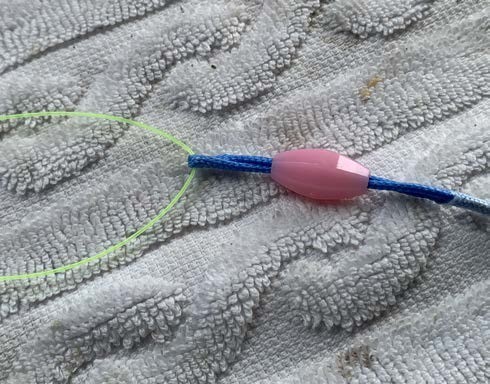
It involves a section of non-slip matting – the kind you place in your galley cupboards and on dashboards to prevent items from sliding about; a pair of scissors; and some reel grease. The idea is to create a buffer between any unprotected metals likely to corrode if exposed to too much salt water.
Cut out a section of the matting that matches the shape of the reel foot and the clamp. Coat this generously with a good-quality reel grease ( Vaseline will also do the job I am told) and then place against the foot and clamp, fixing it to the reel seat on the rod in the normal fashion.
The matting cushions the joint with the grease repelling any salt water, which as we know, can make its way into the slightest gap despite the best cleaning effort.
Tony also suggested removing the screws around the side plate of the reel, greasing them and screwing them back in place. I know of skippers and crew who will take apart any new reels they bring on board, and give them a thorough going over with grease before fishing them.

A good set of game gear is a valuable angling asset and preventative maintenance can help keep it in ‘as new’ condition.
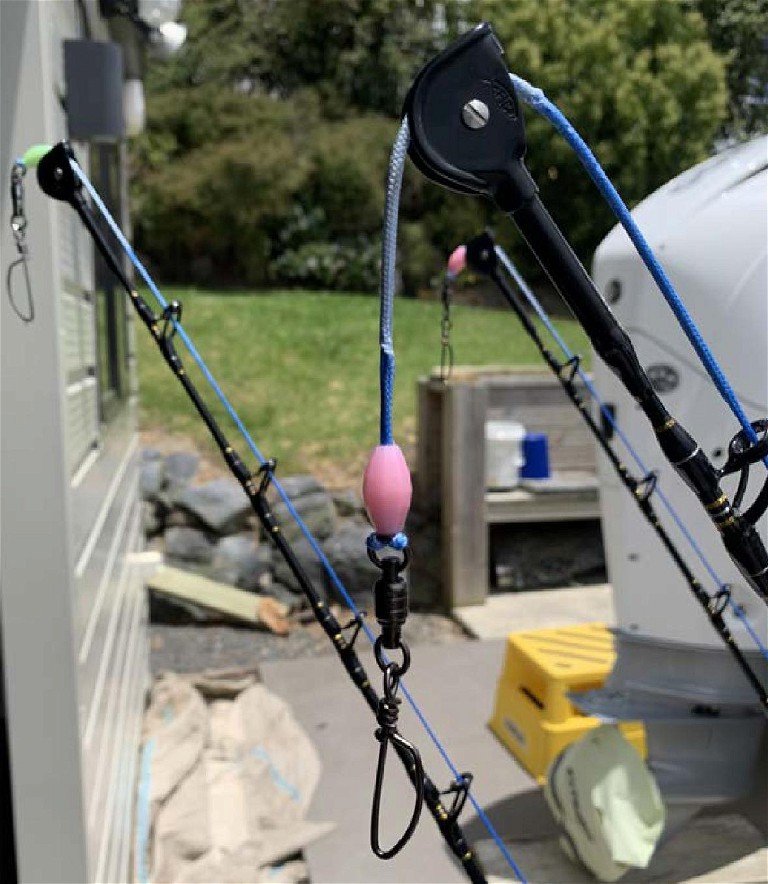
1) A bead threaded onto the leader will prevent the swivel from damaging the rod tip roller or conventional guide.
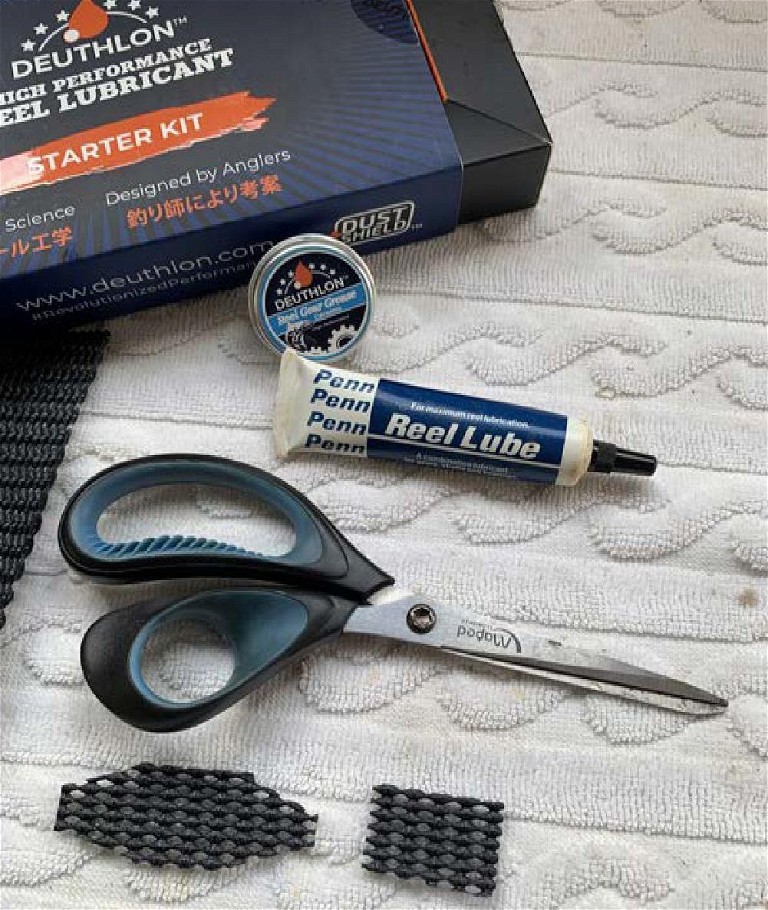
2) The gear needed to protect the reel seat and clamp from corrosion.
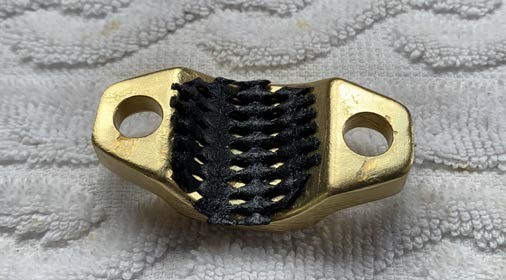
3) The reel clamp gets the same treatment as the reel foot.

4) A small section of matting is cut to shape and covered in reel grease to fit between the reel foot and the rod’s winch fitting.
The second tip is the addition of a bead or a shrink-wrap lumo sleeve on the wind-on leader to prevent the swivel from being pulled into the top eye or roller tip. I am using braid wind on traces from Steve Angus at Swordfish Marine which are looped at either end. Getting the doubled-over leader through a bead or a sleeve is not easy, but putting a short length of mono through the bead, the win- on loop, and then back through the bead to pull the leader through makes a frustrating task so simple.
The only downside to the addition of a loop or sleeve is that it can create a disturbance in the water some predators see as a target. Tuna in particular can be attracted to it and it is not uncommon for them to bite on the adjacent swivel, opening the clip. In the Pacific Islands, the likes of wahoo will strike at anything that moves and I have had them bit through the leader when attacking the bead or swivel. Several of the skippers I have fished with recommend using only black coastal lock swivels and no beads.
There are many other simple tips and tricks to make our fishing lives easier or simpler – what are yours?
“ THE IDEA IS TO CREATE A BUFFER BETWEEN ANY UNPROTECTED METALS LIKELY TO CORRODE IF EXPOSED TO TOO MUCH SALT WATER. ”